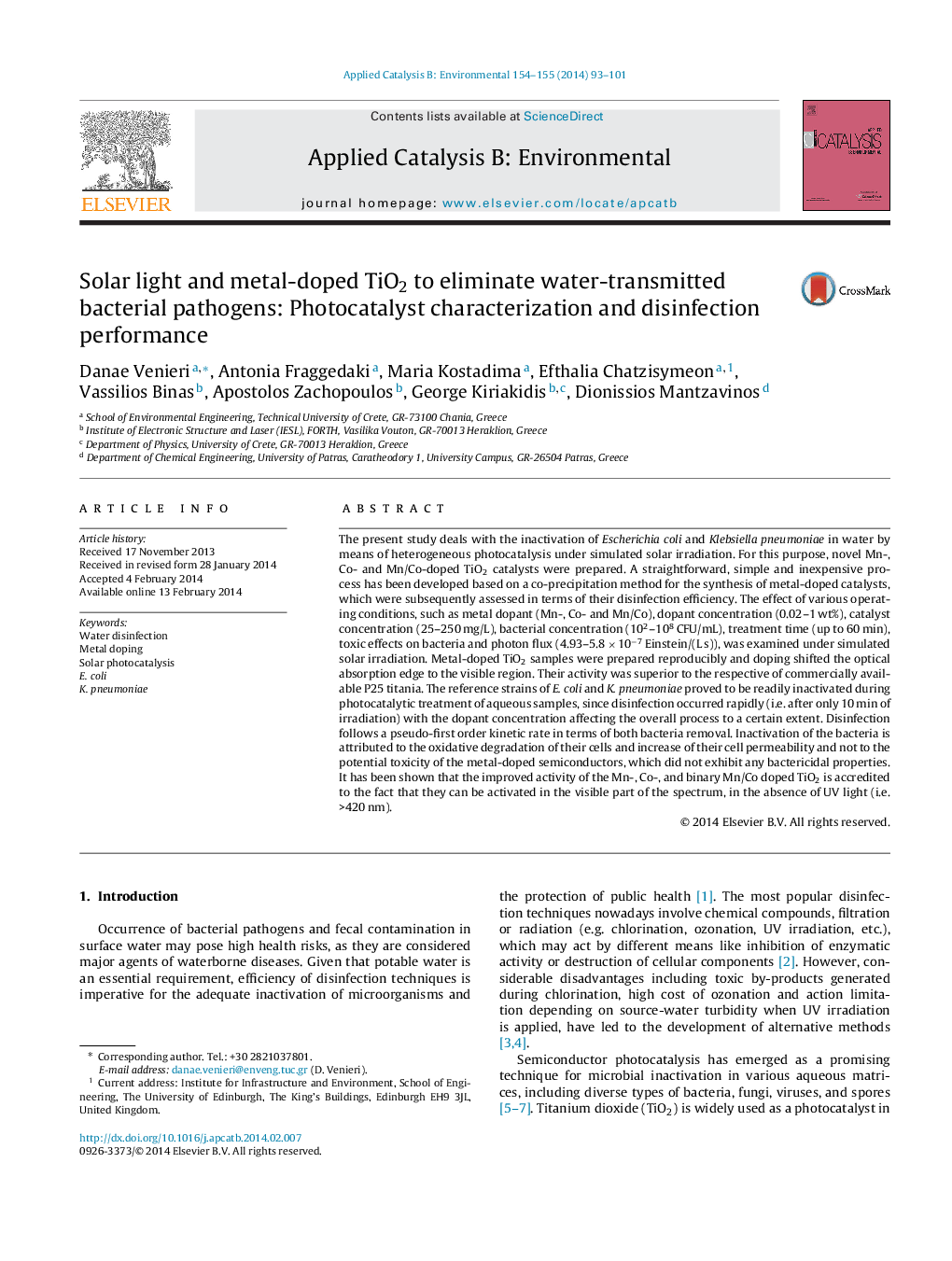| کد مقاله | کد نشریه | سال انتشار | مقاله انگلیسی | نسخه تمام متن |
|---|---|---|---|---|
| 45043 | 46395 | 2014 | 9 صفحه PDF | دانلود رایگان |

• Mn and Co enhance solar/TiO2 activity for Escherichia coli and Klebsiella pneumoniae inactivation.
• Dopants concentrations affect activity up to a certain value.
• The relative activity of dopants depends on reference strain and bacterial concentration.
• The improved activity of doped titania is due to slower electron–hole recombination.
• Doped titania induces inactivation in the visible region of solar spectrum.
The present study deals with the inactivation of Escherichia coli and Klebsiella pneumoniae in water by means of heterogeneous photocatalysis under simulated solar irradiation. For this purpose, novel Mn-, Co- and Mn/Co-doped TiO2 catalysts were prepared. A straightforward, simple and inexpensive process has been developed based on a co-precipitation method for the synthesis of metal-doped catalysts, which were subsequently assessed in terms of their disinfection efficiency. The effect of various operating conditions, such as metal dopant (Mn-, Co- and Mn/Co), dopant concentration (0.02–1 wt%), catalyst concentration (25–250 mg/L), bacterial concentration (102–108 CFU/mL), treatment time (up to 60 min), toxic effects on bacteria and photon flux (4.93–5.8 × 10−7 Einstein/(L s)), was examined under simulated solar irradiation. Metal-doped TiO2 samples were prepared reproducibly and doping shifted the optical absorption edge to the visible region. Their activity was superior to the respective of commercially available P25 titania. The reference strains of E. coli and K. pneumoniae proved to be readily inactivated during photocatalytic treatment of aqueous samples, since disinfection occurred rapidly (i.e. after only 10 min of irradiation) with the dopant concentration affecting the overall process to a certain extent. Disinfection follows a pseudo-first order kinetic rate in terms of both bacteria removal. Inactivation of the bacteria is attributed to the oxidative degradation of their cells and increase of their cell permeability and not to the potential toxicity of the metal-doped semiconductors, which did not exhibit any bactericidal properties. It has been shown that the improved activity of the Mn-, Co-, and binary Mn/Co doped TiO2 is accredited to the fact that they can be activated in the visible part of the spectrum, in the absence of UV light (i.e. >420 nm).
Figure optionsDownload as PowerPoint slide
Journal: Applied Catalysis B: Environmental - Volumes 154–155, July–August 2014, Pages 93–101